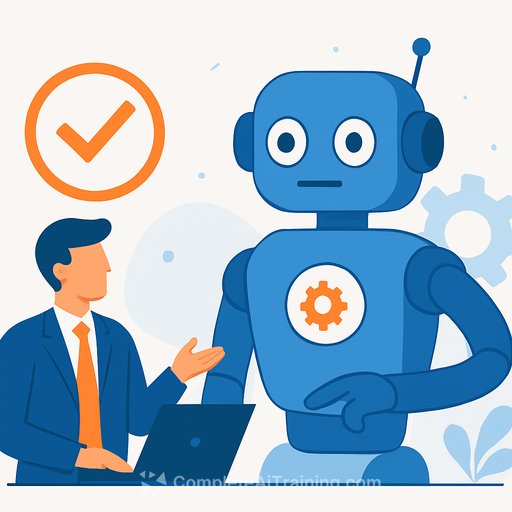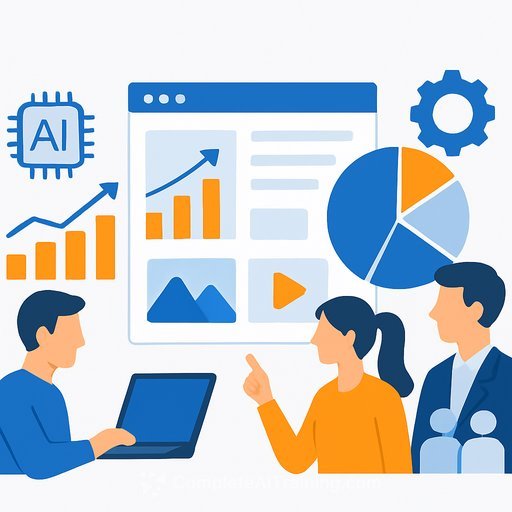Agentic AI: Hype, reality, and how marketers can put it to work
Agentic AI is the new phrase on tees and pitch decks. Strip away the buzz, and you get a simple idea: systems that don't just talk, but take action against a goal.
Unlike chatbots that stop at suggestions, agentic systems plan, execute, and adapt across multiple steps. A recent MIT Sloan Management Review and Boston Consulting Group report describes them as a new class of systems that can plan, act, and learn on their own - more autonomous teammate than passive tool.
What actually makes AI "agentic"
- Goal-driven: You provide an objective (e.g., "launch a retargeting campaign under $5K"). The agent breaks it into steps.
- Action-capable: It uses tools - APIs, browsers, email, ad platforms - to do the work, not just suggest it.
- Adaptive: It adjusts as conditions change (budget, performance, approvals).
- Continuous learning: It improves from outcomes and feedback loops.
Why marketers should care
Marketing lives on repeatable, multi-step workflows that eat time. Agentic AI is built for those loops.
- Campaign setup: briefs, creative variants, targeting, naming, QA, launch.
- Experimentation: design tests, ship variants, monitor, reallocate spend.
- Lifecycle ops: cart recovery, win-back, upsell, inbox triage, basic support.
- Reporting: pull data, standardize, annotate anomalies, send summaries.
- Research: scrape public data, cluster insights, propose actions.
What's real today vs. soon
Early agents can already handle shopping, bookings, and basic admin under a budget and rules. The same patterns translate to media buying, content scheduling, and lead routing with explicit guardrails.
Industry leaders expect agents to take high-level goals and run plays end-to-end. As one AWS executive put it, the shift is going beyond "great ideas" to doing the work. Researchers like Thomas Dietterich point to systems that can refine goals and coordinate - raising new questions about oversight as agents collaborate at scale.
How to pilot agentic AI in 90 days
- Pick one narrow workflow: e.g., weekly paid search refresh or newsletter segmentation and send.
- Map the steps and data: Inputs, tools, approvals, error states, success criteria.
- Choose a framework: Vendor agents (OpenAI, AWS, Google, Microsoft, Salesforce) or orchestration libraries. Start simple.
- Connect with least privilege: Read-only first. Then limited write access. Log everything.
- Set guardrails: Spend caps, step limits, whitelisted domains, brand and legal checks, human sign-off for final actions.
- Run in a sandbox: Shadow mode for 2-3 weeks (agent proposes, you execute). Compare outcomes.
- Graduate to partial autonomy: Let the agent execute low-risk steps. Keep approvals for sends, launches, or spend increases.
Metrics that matter
- Time saved per cycle (hours removed from the workflow)
- Error rate (QA issues, brand/legal violations)
- Pacing and spend accuracy vs. caps
- Lift (CTR, CPL, ROAS, revenue per send) compared to baseline
- Human approvals needed per run (trend down over time)
Risks and how to reduce them
- Brand safety: Style guides, blocked topics, final human review for public outputs.
- Compliance: GDPR/CCPA checks, PII handling rules, consent enforcement.
- Spend leakage: Hard budget ceilings, whitelisted accounts, real-time alerts.
- Tool misuse: Role-based access, OAuth scopes, audit trails.
- Coordination risks: Agents should declare intent and check for conflicts; start with single-agent pilots before multi-agent setups.
What experts are saying
Leaders at major platforms argue the leap is from chat to action - give an agent a goal and it decomposes, executes, and adapts. Longtime researchers like Dietterich and Milind Tambe note this isn't a brand-new idea, but the tooling and scale are new. There's promise, and there are governance questions as agents collaborate, form coalitions, and influence each other's actions.
The MIT Sloan Management Review calls agentic systems a new class that can plan, act, and learn. If you want the academic lens on this shift, start there: MIT Sloan Management Review.
Team and stack checklist
- People: Product owner, marketing ops lead, prompt/agent ops, data engineer, brand/legal reviewer.
- Tools: LLM provider, agent framework, secure API gateway, browser/action runtime, vector store for memory, observability (logs, replays), approval UI.
- Process: Version prompts and policies, red-team tests, incident playbooks, weekly review of agent runs.
Where this is heading
Search interest around "agentic" has spiked for a reason: people want more than chat. For marketers, the win is simple - hand off repeatable, rules-based work, keep oversight on brand and spend, and reinvest time into creative and strategy.
Next steps
- Pick one workflow this week. Write the goal and guardrails. Run a shadow test.
- Set a spend cap and a kill switch. Log every action. Review weekly.
- Expand only after you see stable gains and low error rates.
Upskill your team
If you want a structured path to build agent workflows for marketing, these resources can help:
Your membership also unlocks:






